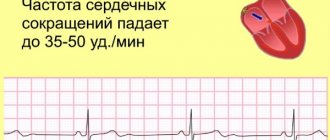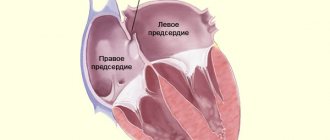Most clinicians are aware of the well-established link between physical fitness and heart health. However, how many are aware that a high level of physical fitness predisposes patients to heart rhythm disorders?
No worries—until you experience one of the two most common serious heart conditions in athletes: atrial fibrillation/flutter and sinus bradycardia in an athlete with ventricular tachycardia requiring a pacemaker.
What constitutes high level physical fitness? It is impossible to determine exactly. This can apply to anyone from professional athletes to amateurs who regularly run, bike or workout at their local gym.
In all of these cases, the level of stress and fitness they cause far exceeds the population norm. There is no known threshold of physical activity, above which arrhythmias and bradycardia in athletes associated with physical training necessarily occur. It is likely that unidentified individual patient factors may be involved.
Fitness-related atrial fibrillation and atrial flutter
Most cases of atrial fibrillation and flutter occur in older people with coronary artery disease, valvular heart disease, or other heart conditions. It can also occur - most often - in middle-aged adults and sometimes in young adults who have a high level of physical fitness and do not have underlying heart disease or medical conditions.
Atrial fibrillation is the most common serious fitness-related arrhythmia. Numerous studies have shown that the incidence of atrial fibrillation in endurance athletes (eg, runners, cyclists, skiers) is 2 to 10 times higher than in controls.
It is estimated that for every 10 years of regular endurance exercise (defined as 30 minutes, and often three or more times per week), the risk of atrial fibrillation increases by approximately 16%, and the risk of atrial flutter increases by 42%.
Famous athletes such as tennis icon Billie Jean King and basketball star Larry Bird fell ill with atrial fibrillation, atrial flutter, some in their 30s and 40s.
Episodes of atrial fibrillation and atrial flutter may occur during exercise or at rest. Although the etiology is unknown, many causes have been proposed, mostly focusing on atrial remodeling due to exercise-related atrial pressure overload, high vagal tone, or inflammatory mediators that circulate during muscle pain.
WHY DO LOW HEART RATE WORKOUTS WORK?
CHRIS LEIFERMAN:
I run in heart rate zone 2 because I respond better to volume and don't get injured. When I get into heart rate zones 3-5 it starts to compromise my immune system and I start to break down a little.
When you get into zone 4 or zone 5, it really puts a lot of stress on your body. Of course, if I'm running fast, short distances, it's important to choose Zone 4 or Zone 5, but specifically for IRONMAN training, Zone 2 has been a good marker for me.
I use Zone 1 as a very easy run, just for recovery.
Zone 2 is aerobic running, usually long distance running. After a few weeks of training in zone 2, my speed tends to increase.
I also work at a pace, but maybe once a week. That's five zone 2 runs and one race pace session each week.
I run a lot in zone 2 for endurance, and then work my way up to zone 4 or 5 for 15 minutes, then return to zone 2. I repeat this several times.
BART AERNOUTS:
I have always had good luck with coaches who prefer to work with this approach with a lot of basic training. What works very well for me is to run a lot of miles in the base zone and only include a few speed runs.
Just looking at my results, even in fast running I improved significantly by training in zone 2.
I spend at least 70 percent of my time in zone 2. The last 30 percent is either easy running or quality (more intense) training.
My HR zone 2 is also close to my IRONMAN marathon race pace, so it's actually a fast running pace, but it doesn't feel that way in training.
Of course, it's different at longer distances - after six hours of running, and zone 2 is the highest you can go.
Exercise-related bradycardia
What is bradycardia in athletes? Do all athletes experience bradycardia?
Physically healthy people usually have a low heart rate and heart bradycardia is often perceived by athletes as a high level of fitness. Bradycardia in athletes: skiers, runners, swimmers, and cyclists is especially severe due to heavy loads on the cardiovascular system.
Recreational endurance athletes often have a resting heart rate of 40 to 60 beats per minute, and high-level professional athletes may have a resting heart rate of 30 to 40 beats per minute, and bradycardia in athletes is good, but only asymptomatic . You may not hear such a thing as asymptomatic bradycardia; it is also called moderate bradycardia in athletes.
The question arises: is bradycardia in athletes good or bad? To put it simply, “good” (non-pathological) bradycardia is a good sign of a trained organism. If athletes are characterized by bradycardia with symptoms, this sign means there is a risk of developing other dangerous pathologies.
How to train pulse zones
Each heart rate zone has its own type of workout.
- The first zone is not considered a training zone; this is the pulse with which we walk, talk, and carry out current affairs.
- The second zone is also not trained, but swimming techniques are practiced in it: calm, effortless crawl, breaststroke, calm backstroke. There should be no shortness of breath when swimming in this area.
- The third zone is trained in a series of longer segments, for example, 4 times 400 meters with a rest of about 40-50% of the swimming time. If you swim 400 meters in 6 minutes, then rest between series should be 2 minutes. And shortness of breath should go away within 30 seconds, then the pulse will return to the first zone.
- Zone 4 is trained in shorter segments than Zone 3 workouts, but at higher intensity and with less rest time in between. For example, 20 times 100 meters. For an amateur who swims 100 meters freestyle in 1 minute 30 seconds, rest should be no more than 1 minute between segments.
The specificity of this zone is that you cannot train in it every day. If the training schedule includes 5 days a week, then a day of intense training in the 4th zone must be followed by a day of work in the 2nd or 3rd zone.
Causes of bradycardia in athletes
Although physiological bradycardia in athletes is often associated with increased parasympathetic tone, recent research suggests that it may result from remodeling of pacemaker ion channels and resetting of the intrinsic heart rate.
In most people, this condition is asymptomatic, and bradycardia in athletes is considered normal. However, these patients are at risk for bradycardia-related problems such as dizziness or fainting later in life.
Paradoxically, the most life-threatening complication of bradycardia on the ECG in athletes can be seen as ventricular tachycardia, caused by one or more ectopic ventricular foci disrupting the rhythm of the bradycardic sinus.
Recent studies estimate that the cutoff for bradycardia in trained athletes among 60 former professional cyclists with an average age of 66 years was approximately 50 percent.
Pacemaker placement is the definitive treatment for symptomatic bradycardia in former athletes. The prevalence of pacemaker insertion is increasing in Western countries as the population ages, with approximately 12% of these insertions being associated with sinoatrial causes of severe bradycardia in athletes. Because the rate of pacemaker insertion in older athletes is at least three times higher than in matched controls, this rate may continue to increase as people age.
Why do swimmers need pulse training?
In amateur swimming and long-distance swimming, it is not necessary for stayers to work in maximum heart rate zones, but they still need to be done from time to time. These works must be performed under the supervision of a trainer.
Such training is necessary so that the body is prepared for the finishing spurt at the end of the distance, where stayers have to swim in the fifth pulse zone.
Stayers need to work in the fourth pulse zone in order to make turns in the pool or turns around a buoy in open water without losing speed. Working in this zone on 100-meter segments trains stayers' endurance.
Is bradycardia dangerous in athletes?
Asymptomatic bradycardia is normal for people who play sports. If bradycardia does not cause you any symptoms and remains between 40 and 60 beats per minute without exercise, then you should not worry.
However, there is always a risk of transition from non-pathological bradycardia to malignant. You should have regular check-ups with a cardiologist to rule out this possibility.
To be confident in your workouts, always monitor their intensity. You should not exercise too much or too often. It is under such conditions that bradycardia will not threaten your health and your life in general.
WHAT ARE THE BENEFITS OF TRAINING AT A LOW HEART RATE?
CHRIS LEIFERMAN:
This helps avoid illness and injury. When I trained at higher intensity, my body began to break down and I would get stress fractures if I trained above zone 2 for too long.
Thanks to low heart rate training, I can run fast with good volume and train healthy day after day, week after week.
BART AERNOUTS:
Based on my training, I have found that the lower zones are a great way to improve your skills. Many athletes are not confident enough to train a lot in the lower zones, thinking that they need to train at a fast pace to be faster in the race.
It's easy to recover from low heart rate workouts, and if you do a few quality high-intensity workouts, you'll want to make sure the quality is high.
Many people work too hard in easier classes and don't do as well in quality classes because they are tired and haven't recovered properly. This is very important for overall training, and with the lower zones you can train more and still recover well.
Calculation of MHR (maximum heart rate)
Previously, the average formula for determining the MHR was used: 220 - the number of years. That is, if you are 45 years old, then the MHR is 175 beats/min. At the moment, there are already refined formulas for men and women, but even they do not give such accurate results as laboratory testing. It is this that allows you to accurately determine the parameters of your heart.
Most often, MHR is determined either using a stress test on a treadmill (treadmill) or using a special exercise bike (bicycle ergometer). Based on the results of the research, the doctor will calculate your pulse zones.
How often should amateurs train?
If you have just started learning to swim, 2-3 lessons a week with a coach will be enough for you. In these classes, you gain basic knowledge and practice basic skills: swimming without acceleration in the second pulse zone, practicing various swimming techniques.
There is no need to practice more often at this stage. The body needs time to recover and prepare for further stress.
If you have already mastered swimming and are preparing for some competition (including triathlon), it is better to increase the number of training sessions to 3-4 per week. It is also recommended to create a training plan for a week or month, indicating different types of load.
How to measure your pulse correctly in water
Now there are many gadgets that measure pulse in water. A watch that reads your pulse from your wrist using an electro-optical sensor is quite suitable for this.
Traditional chest heart rate monitors in water will be of little information, since the sensor does not have close contact with the chest, and the information may be incorrect.
You can use the well-known method: place your fingers on the carotid artery, count the number of beats for 10 seconds, multiply the resulting figure by 6. The result will be the actual pulse.
Is heart rate different during swimming in a pool and in open water?
Typically, stayer swims, including marathons, are held in open water (on a river, sea or other body of water). In the pools, starts are held at 50 and 1500 m. Therefore, the difference in heart rate zones is quite obvious
Short swims in the pool are performed in the fourth and fifth zones. Moreover, the pulse of a professional athlete during such a swim can be 95 or even 100% of the MHR.
Marathon swims will be performed in the second and third zones. Swimmers deliberately maintain a monotonous pace, trying not to go beyond the selected heart rate range, which allows them not to waste energy that will still be useful at a distance.
At the same time, we must not forget about additional factors that exert resistance on a swimmer performing in open water: equipment, weather conditions, current. Because of this, your heart rate will still be slightly higher when swimming in open water.










